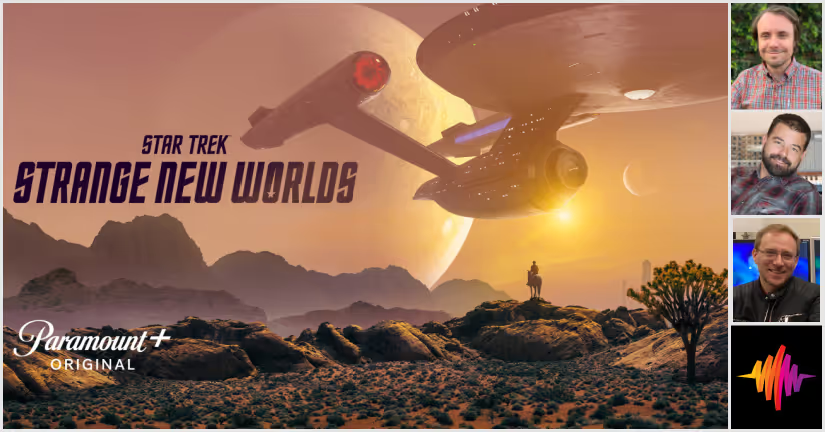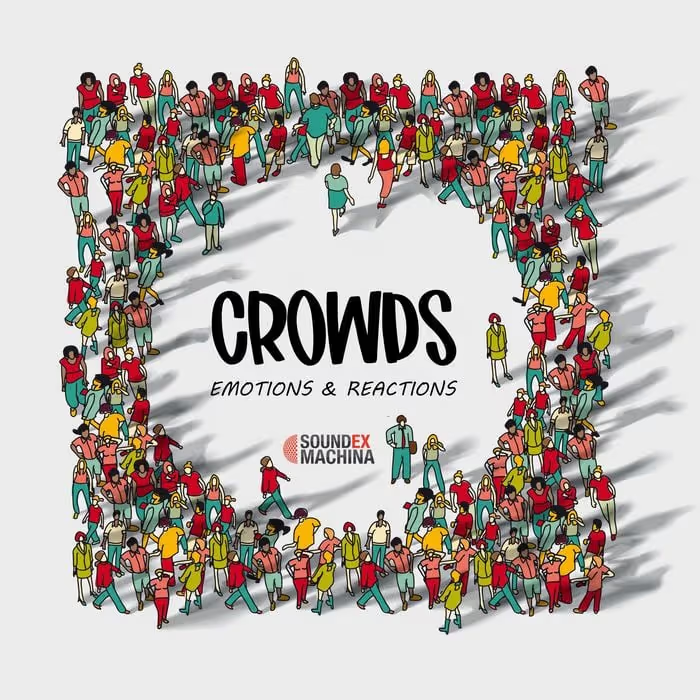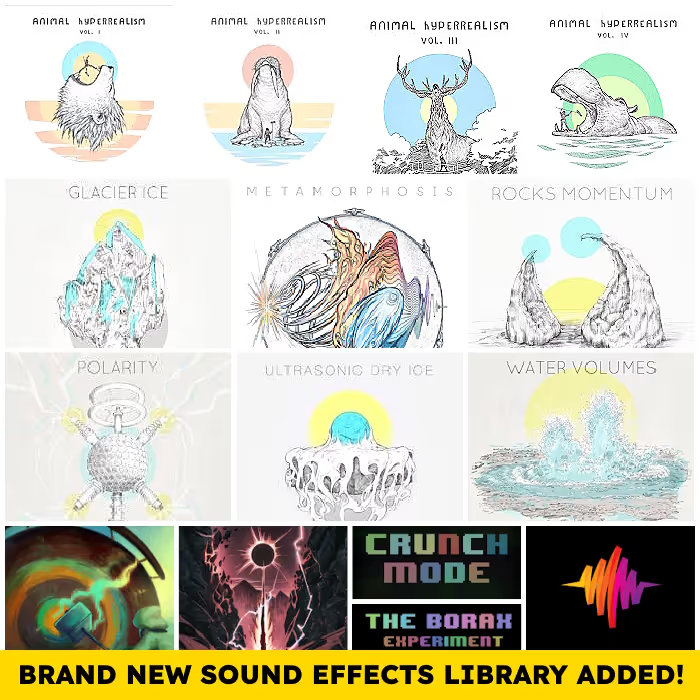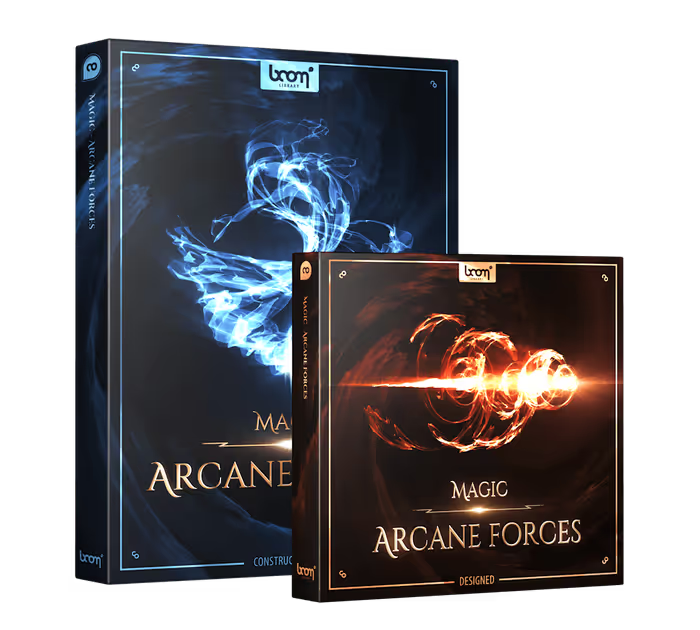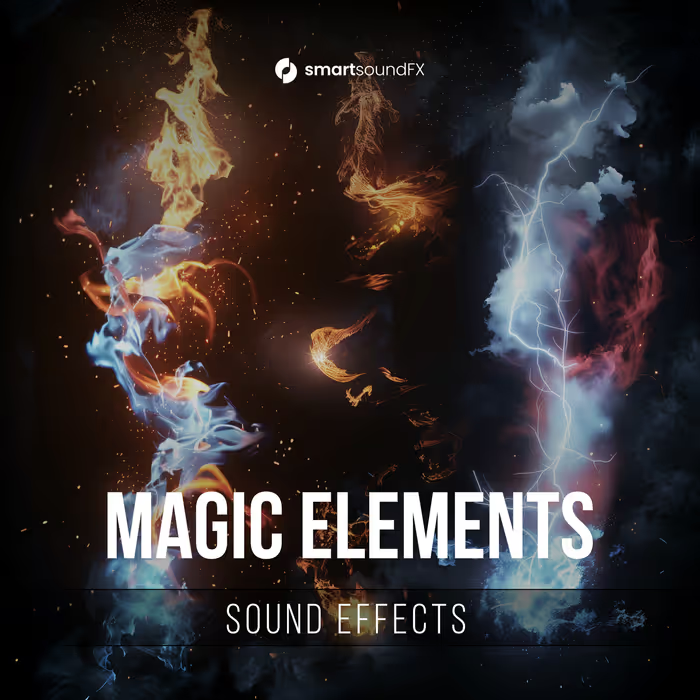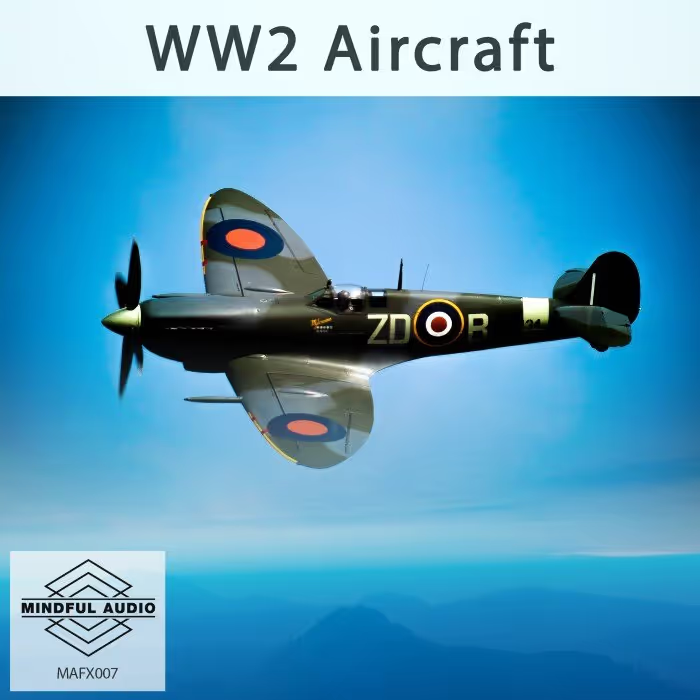Paramount+ is the home for Star Trek series, from classic content like The Original Series (1966 – 1969) to the latest new series Star Trek: Strange New Worlds, plus upcoming projects like the much-anticipated Section 31.
Supervising sound editor Matthew Taylor has been a major part of Paramount+’s new Star Trek content that started with Star Trek: Discovery on CBS All Access (now Paramount+). He’s won MPSE Awards for the sound editing on Star Trek: Short Treks and Star Trek: Picard, and earned Emmy and MPSE nominations for sound editing on Star Trek: Discovery, Star Trek: Picard, and Short Treks – as did his long time collaborator Michael Schapiro (sound designer/sound effects supervisor), who has worked on the Paramount+ Star Trek series almost as long as Taylor has. Together, they have a deep understanding and appreciation of the sound of the Star Trek universe.
Along the way, they’ve teamed up with other award-winning sound designers and effects editors, like Harry Cohen, Tim Farrell, Clayton Weber, Christopher Scarabosio, Katie Halliday, and more. And for Strange New Worlds, they’ve recruited a new award-winning sound designer/effects editor Kip Smedley.
Here, Taylor, Schapiro, and Smedley discuss their approach to updating sounds for the iconic Enterprise, incorporating classic Star Trek sounds, designing sounds for new tech and alien cultures that the Enterprise crew encounters, recording alpacas for creature vocal designs, building an Aeolian harp for the transporter sound, crafting tense space battles, and so much more!
Star Trek: Strange New Worlds | Official Trailer | Paramount+
Matthew and Michael, you have worked on so many Star Trek projects for Paramount+. Matt, I think you’ve been on all of them…
Michael Schapiro (MS): Matt, you might have passed 100 episodes at this point.

I have been on everything except for Season One of Discovery, and some of the Short Treks.
What were some new opportunities for sound that made you excited for Strange New Worlds?
MS: When I came in on Season Two of Discovery, the sound had been well established by Tim Farrell so it was neat to help figure out what the sound of Strange New Worlds would be.
With Discovery, we had this experimental ship with the spore drive but Strange New Worlds is focused on the iconic Enterprise. It was great to be able to update the sound of the Enterprise – to go back into 60-year-old sounds – and figure out what we want to make, what we want to clean up and just use straight, what we want to update, and how we want to define the sound of this show.

Matthew Taylor (MT): We dropped into the first spotting session and there was this new showrunner, Henry Alonso Myers. We asked him, what canonical sounds do we need to pay attention to? And he basically said that they wanted to honor everything that’s been established in the prior series but also make it our own. This world has sonically been established – we love it, fans love it, and we all want to hear it. He said to use that as a base and go from there.
As far as new sounds go, Michael, Kip [Smedley], and I discussed updating the sound of the transporters, for example. (They can talk about how they went about that.) We talked about how to make some of those sounds and how they made some of those sounds in the past, so it was a journey into history, as well.
MS: Some of it I liken to archeology – digging up the old stuff, dusting it off, and cleaning it up.
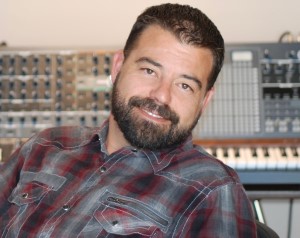
With a lot of the old school TOS (The Original Series) UI sounds, everything was big with chunky buttons and switches but everything now is touch screens. Getting that kind of stuff updated was interesting – to make it still feel like it’s the Enterprise – but we can’t use a big, chunky “ka-chonck” sound when there’s no physical switch that we’re seeing.
Kip Smedley (KS): When we do see those big chunky switches though, we sure do lay into them.
MS: Absolutely. Whenever we can. Some of the old Trek backgrounds and computer sounds are like these old mechanical punch card computer sounds, so we tried to build those sounds – and similar sounds – into the BGs for certain parts of the Enterprise.

A fun retro-tech moment was when La’an is using this Bio Signal detector device to find the captured crew in Ep. 1. It looks so wonderfully analog, like transistor radio! What went into the sound for this?
KS: It’s a tricorder, so it had the tricorder beeps and its palette of noises that come from TOS tricorder elements, and some new flavors that complement those sounds and can live next to these old retro noises. This season, we do a lot of tracking with the tricorder – a character has to go and find a particular person – so we have the tricorder tracking noises.
That was a combo of Michael and me.
I’ll load the sound into Radium in Soundminer and play along with picture..
MS: The only thing I did to your sounds was to reverse some.
KS: That’s Sound Design 101 right there. That’s what makes us sound designers. We reverse noises.
Once we’ve built our kit of noises for each device – the tricorder, the padds (personal access display devices), and so on – they live inside our super session. So let’s say Uhura is typing on her padd, then I’ll need a whole lot of beeps for her sitting in the corner and typing. So I’ll load up that padd sound.
And for repetitive sounds, like someone typing, I’ll load the sound into Radium in Soundminer and play along with picture because that’s way easier than trying to cut and drop in every single finger stroke.
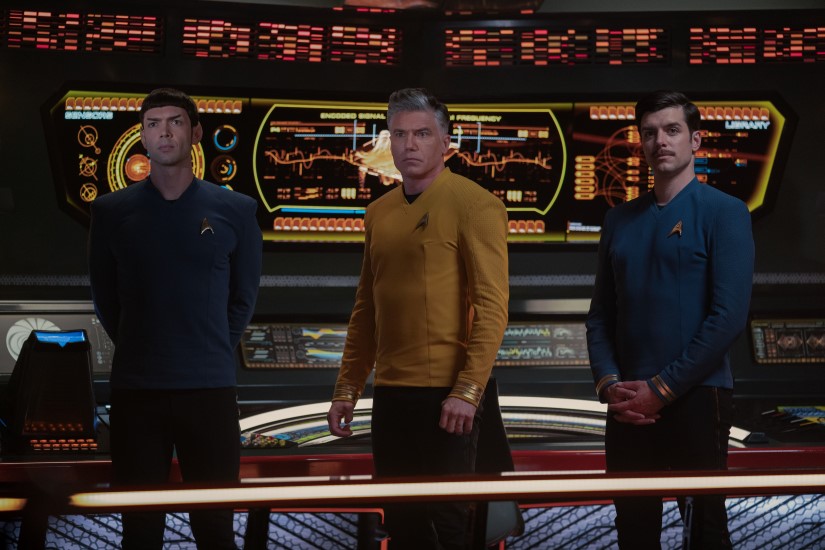
Kip, this was your first Star Trek project, correct?
KS: This was the first one for me. I’m the baby of the team. I’ve known Matt for years now and I’ve been wanting to join his team for as long as I’ve known him, basically, but schedules have never worked out. Just as this show was starting, my schedule opened up and Matt asked if I wanted to join Trek. I said I would love to. Then he asked, “Are you sure? Do you know how much work it is?” I replied, “Nah, it’ll be fine. How tough can it be?”
Boy was I wrong.
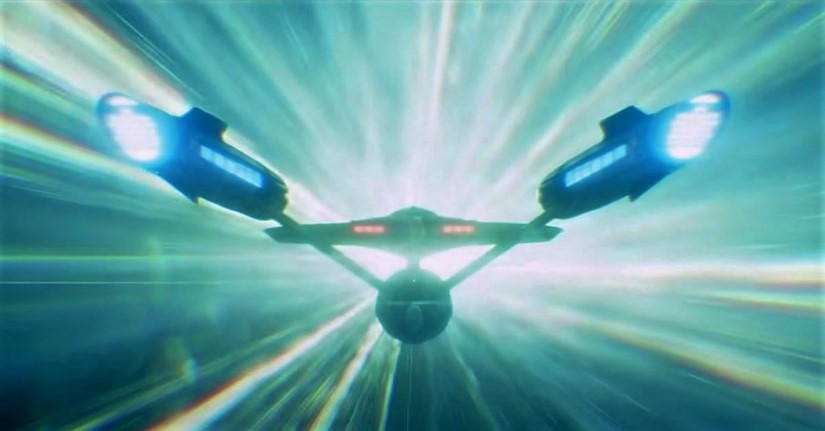
What were your initial thoughts going into it? Any trepidation about jumping into an IP that’s so well established and has fans that are really into the way things sound?
KS: You can’t think about that when you’re doing it or else you’ll be frozen. You can’t be concerned about what everybody’s going to think. You just have to make it as cool as you can, and as cool as your gut tells you to make it, and hope everybody likes it.
…it became a game of having to make a new noise for this phaser or this blaster…so how can I tuck in a little nugget of ‘Star Trek’ history…
With something like this, there are 60 years of history with sound and as you go through the sounds, they don’t always use the same sound for the same device. It’s a little bit willy-nilly. So for me, it became a game of having to make a new noise for this phaser or this blaster, or this door or whatever, so how can I tuck in a little nugget of Star Trek history – whether it’s TOS or from the films or it’s The Next Generation, which I grew up watching. (Much of what I cut and much of my Star Trek sound sensibility comes from growing up listening to and watching The Next Generation.) There are a lot of those flavors mixed in; that’s what I think Star Trek sounds like so that’s what I lean into.
MS: I think we all came up with TNG as opposed to The Original Series. We’re not old enough to have grown up with that.
My family would watch TNG every night at dinner, or whenever it was airing. I think we also watched Voyager and maybe a bit of DS9.
I’m sure fans will see this interview and say, “How dare they not have watched every single episode all the time!”
We all have a very good understanding of the sounds of these shows and the eras.
It’s always illuminating to look at like Reddit and just see the level of knowledge that some of these fans have – like, the phaser sound had shifted halfway through The Original Series, and they’re using the phaser stun sound from one era of TOS and the kill sound from another. So in my head, it’s always there (at least a little bit) and I try my best but I don’t have that encyclopedic knowledge so much.
MT: I feel like encyclopedic knowledge helps you to know where you can NOT go and can go. I’m not that knowledgeable.
Actually, I feel we’re being modest. We all have a very good understanding of the sounds of these shows and the eras. But there’s going to be something – that little thing that we didn’t know about that happened in that one episode…

When you read comments on Reddit, do you take that information in stride and apply it to upcoming episodes that you’re working on?
MT: I’m not a big social media fan. But, yes, we do. People need to understand that sometimes the showrunners have visions and certain ideas for sounds that may or may not align canonically. It usually does, but maybe for storytelling purposes, they want to go in a different direction instead.
…sometimes the showrunners have visions and certain ideas for sounds that may or may not align canonically.
So, in some viewers’ eyes, that might look like it’s going off the rails of what has been established but for others, they understand that it’s about maintaining the story and the vision and that’s our job.
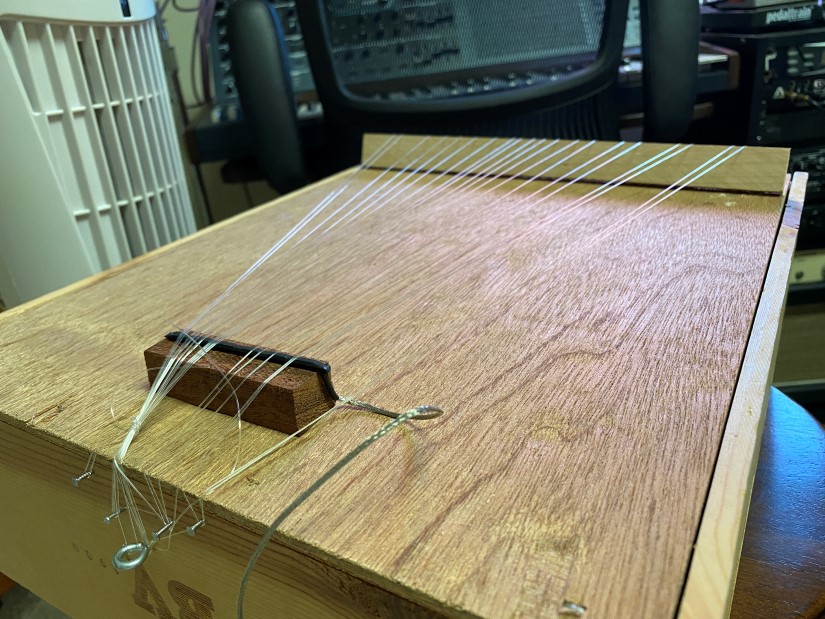
What were some new sounds for the Enterprise that you got to create, recreate, or reimagine for Strange New Worlds?
MT: When Michael, Kip, and I started talking about creating new sounds for this show, we talked about the Aeolian harp. It makes very similar sounds to what the Jack Cookerly organ made for the Star Trek transporter sounds. So Kip created his own Aeolian harp.
KS: I physically built an Aeolian harp out of an old wooden wine box and some fishing wire. For fun, I build guitars out of cigar boxes. It’s a hobby of mine. So when we were talking about Aeolian harps, I said I’d just build one. So I did. I put some guitar pickups into it.
I physically built an Aeolian harp out of an old wooden wine box and some fishing wire.
But I couldn’t get the wind to vibrate the strings enough for me to record them – the breeze just wasn’t strong enough that day – so I ended up using a fan in my room, and then positioning and holding the Aeolian harp up against the fan.
That’s one of the main layers we’re using in the transporter sound. The sound has a lot of layers to it. We have the sound of the engines powering up, the machine powering up before the transport happens, the fader rise (the tactile sound of the faders going up and the machine reacting to that), materialize and dematerialize sounds.
Kip Smedley’s handmade Aeolian harp
…a lot of the materialize and dematerialize sounds came from that Aeolian harp.
So, a lot of the materialize and dematerialize sounds came from that Aeolian harp.
MT: For a short while, we considered going to San Francisco and recording the Aeolian harp on the pier.
KS: Yes, there’s a giant art installation Aeolian harp on the pier, so the cables run under the pier and they’re attached to these satellite dishes. It would be awesome if we could have met up in San Francisco and recorded things, but that didn’t pan out.
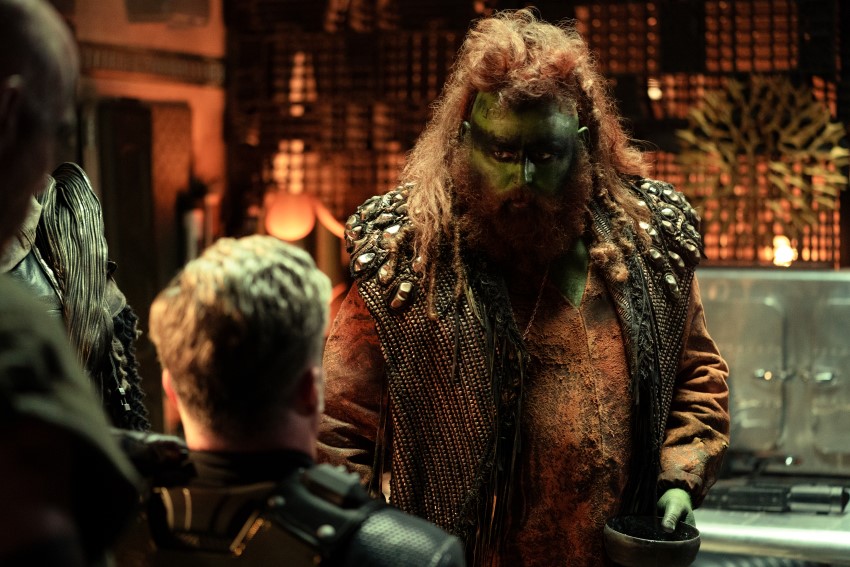
Each episode of Strange New Worlds goes on a new mission to a new place. The crew encounters different races of aliens and their unique advanced technology. Can you talk about how you approach the sound of the different technologies for different races? Is it spelled out by the showrunners? Or is it more of a ‘feeling’ that guides your sonic choices?
MS: I’d say it’s a little bit of both. It’s not so much an established technical level, it’s more that we’ll try and establish character, often through UI sounds. Especially if it’s a new culture, we want to approach it like its own character. (Kip can attest to beeps on these shows!)
Hopefully, that character reflects the culture that it’s attached to. For instance, in Picard with the Romulans, it’s more violent than the Discovery beeps, which are smoother and kind of glassy, because Romulans are historically a warlike culture.
KS: In Strange New Worlds specifically, Ep. 1 starts with a brand new culture. That one was fun because we were going more retro with that culture. In fact, we had a discussion about making the race sound like they’re still stuck on Earth, circa the 1960s.
Especially if it’s a new culture, we want to approach it like its own character.
MS: Yeah, the 1960s with technology from the 1990s or early 2000s.
KS: So, we had similar TOS-style beeps and chunky doors that are very mechanical. For the laser eye scanner, it’s a very techy laser scanner, but then when the light pops up, I think I’ve got the Kmart blue light special happening just to hint to 70s/80s tech.
MT: In Ep. 10, a classic Star Trek foe shows up and they’re in the TOS style. This established foe has a very different sound – almost like a Naval ship Conning tower-type of feel – and that’s very much attached to their culture.
…it’s a very techy laser scanner, but then when the light pops up, I think I’ve got the Kmart blue light special happening just to hint to 70s/80s tech.
MS: Another interesting culture – we don’t see enough of them to establish their beeps – is the Shepherds in Ep. 2. They’re zealots and set in their ways, so we wanted to get the feeling of this old tech that’s still super powerful. It’s not oppressive, just very different from any of the ships and designs we’ve seen. It’s a big spinning cylinder-type of ship and it’s pretty wild. So, anything we can do to help sell the idea that this culture is into zealotry…
MT: …and that it’s been around for a long time – centuries, essentially – escorting this comet through the galaxy. So those were all-new sounds that we needed to come up with.
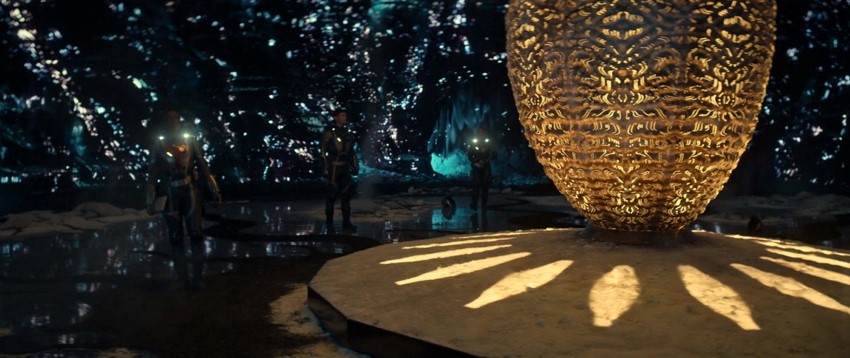
Also in Ep. 2, La’an, Spock, Sam Kirk, and Uhura land on the comet, and once inside, discover an advanced-tech egg-like mechanism that can deactivate the shields. This is controlled by music, so Uhura and Spock start singing. I love how you made this work sonically. What went into that?
MT: That’s a three-parter. There were the vocals from the actors involved. There were elements that Kip and Michael added.
MS: All of the cave and egg responses to Uhura’s and Spock’s singing are generated from their singing. I ran their vocals through many, many processes to make this reflected sound that’s matching their tonality and I used a little bit of tuning to get it going.
Story-wise, it is the cave and the egg responding to them so sonically and process-wise, it’s also the cave responding to them.
Story-wise, it is the cave and the egg responding to them so sonically and process-wise, it’s also the cave responding to them.
I created processing racks in Soundminer using many different VST plugins, such as Movement by Output, which is a more musical plugin than I generally get to use. It’s a delay processor. I also used Kilohearts Snap Heap – all over all the Star Trek shows, actually.
KS: If there was one plugin that was integral to the sound of Strange New Worlds, I’d have to say that was the Kilohearts universe of plugins. Snap Heap had been my go-to, per Michael’s advice. Before we started, he said Snap Heap is the plugin they really like because you can do anything with it. It’s in every rack; it’s always right there. It’s always open. It’s always ready to do some mangling.
MS: I love it because it’s kind of like building your own custom plugin. Snap Heap is very similar in mindset to having a big modular synthesizer without the cost and physical space requirements of a big modular synthesizer.
Snap Heap is very similar in mindset to having a big modular synthesizer without the cost and physical space requirements of a big modular synthesizer.
I like that it’s not an emulation of hardware. I used some – like VCV Rack – but they don’t fit into the workflow as well because you’re patching these virtual cables around and it slows me down a bit. With Kilohearts, it’s really, really fast to build a custom processing chain, like if I need a ring mod, four pitch-shifters, and 17 delays. I can just mess around and dump stuff in and see what happens. It’s really good for the happy-accident style of sound design that I tend to ascribe to – throw stuff at things and see what works and then build off that.
Kilohearts had me in the BETA for much of their new stuff so a lot of that got used. Just having so many more modulators and options for strange routing is something I always enjoy.
Some of the other plugins on the cave/egg response sound were Portal by Output, Polyverse Comet, which is a tuned reverb, and Manipulator by Polyverse/Infected Mushroom. It’s the weirdest pitch-shifter that I’ve ever found.
I tried to think of it like sympathetic harmonics.
So all of those were layered in, in various different ways and different processes, to build up this large cavernous reactive singing space. I tried to think of it like sympathetic harmonics. Like, if you have a tuning fork and you play another tuning fork near it then they both start ringing. That was the idea behind the processing of Uhura singing and the cave reacting to and changing it a little bit as they’re trying to figure out this musical language.
MT: In the spotting session, they noted that the cave reacts to her singing by kind of echoing it back at first. We wanted to do that without just echoing back the singing, and then having that evolve into a language.
Then when the egg really becomes alive, music took over because they wanted to go to a track that was composed by Nami Melumad. They knew about that track while they shot these sequences, so everything and everyone during production reacted to this track that Nami wrote.
We wanted to do that without just echoing back the singing, and then having that evolve into a language.
We also recorded ADR for them singing, which Mike used for this.
MS: Having the cleaner versions of the singing that we recorded in the ADR booth (as opposed to the on-set tracks) helped a lot.
MT: Once we saw the final VFX, I tossed in a few things at the end just to help accentuate some of the extra lights and stuff but that was mostly using Spock’s and Uhura’s singing as a different harmonic in there. That was a combo of automating Byome by Unfiltered Audio, FRQShift by Tonsturm and automating Valhalla Shimmer.
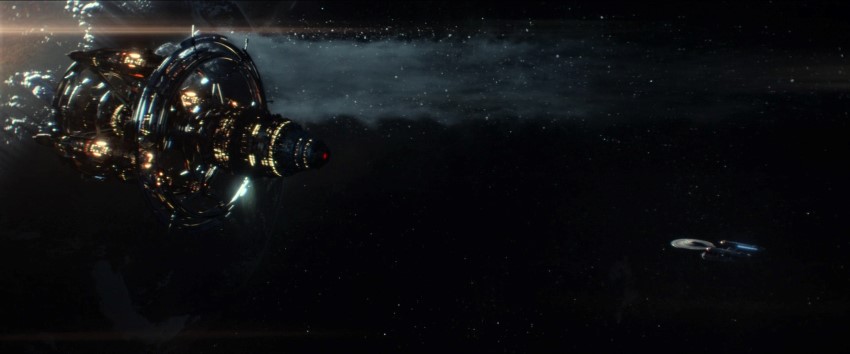
Was there any back and forth with the music department when working on the sound of this cave/egg reaction?
MT: No, not really. Since we knew what the tune was, we worked around that. Henry really liked the singing and humming from the set, so that was our base of materials from which to make the cave reaction elements.
And once the cave really starts singing to them, that is where music took over. However, it was on us to evolve the initial cave reactions to what music had already delivered.
MS: We knew where we needed to be for a possible handoff between sound and music.
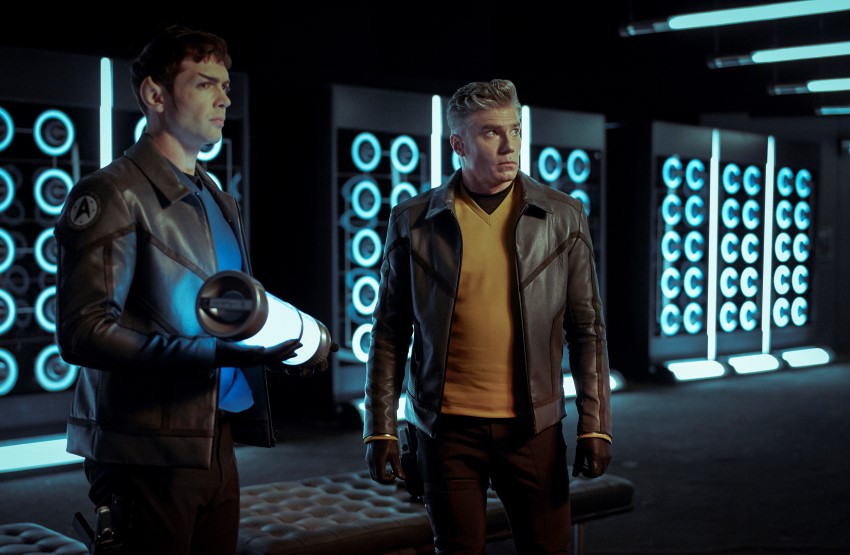
In Ep. 3, while exploring the Illyrian colony named Hetemit 9, Capt. Kirk and Spock are trapped on-planet during an ion storm, and electrical creatures arrive and save their lives. What were some of your opportunities to have some fun with sound here?
KS: This was the first episode that we worked on. The challenge was that everything was electrical and you can’t just cut the same electrical sounds for everything because then it would all sound the same. You have the ion storm as they’re working there, the electric creatures, and the building itself, which has its electric elements. It was tough to get each of the elements to sound like its own thing.
For the ion storm, we processed thunder and lightning storms, sending that through our Snap Heap plugins again and adding different layers.
MS: I have about 20 or so Snap Heap patches that I’ve made over the years to try to emulate those stereotypical circuit breaker and electrical spark sounds that have this crazy, almost-squeal to them. And nothing else ever matches those old Harry Cohen sparks, so we had Harry Cohen helping out on this episode, too.
And nothing else ever matches those old Harry Cohen sparks, so we had Harry Cohen helping out on this episode, too.
He did a pass on at least one of each of the electrical things in this episode, so that we had different takes on it. Harry took the lead on the electrical plasma creatures and I did a lot of the lightning storm.
KS: Michael and I attacked the light virus together. Also, I created the voices for the electrical creatures. One of our secret weapons in this show is that we used a lot of bird sounds. This came from Mike and I don’t know if this is an outstanding Star Trek element…
MS: I don’t think it was ever purposeful, but birds are really useful.
KS: We process a lot of birds. Birds are great; they make crazy noises. You can pitch them up, pitch them down, ring mod the crap out of them, use delays… You can manipulate bird sounds in so many ways to get a cool, organic noise that can sound electric if you need it to; it can sound extremely organic if you need it to. They’re just useful.
You can manipulate bird sounds in so many ways to get a cool, organic noise…
For creatures, I love playing the pitch slider in Soundminer. As I’m auditioning sounds, I use the pitch slider as a way to play the noises back as I’m recording. A lot of the noises are run through my VST racks so they get all of my crazy effects on them, and then as I’m playing that pitch slider, it gets recorded into Pro Tools. That’s how we got a lot of the voice noises for those electric creatures.
Some of the processing on the voices was created using Audio Ease Altiverb (because it’s great on everything), Glitchmachines, which are fun plugins but they do their own thing and you have to accept that it’s going to sound like a Glitchmachines plugin (but if you tweak it just right you can make it sound not so Glitchmachiney), and Kilohearts Snap Heap.
…Fresh Air is amazing at adding a little bit of sparkle to recordings that didn’t have sparkle to begin with.
Since we’re using a lot of the old TOS-era recordings, I’ve been using Slate Digital’s Fresh Air, which is meant for music to add sheen and sparkle to drum recordings and to make rooms sound big, but for this show where we’re taking super old recordings and trying to refresh them and make them sound new and hip, you have to put back some of that hi-fi-ness that has been lost to 60 years of tape and Fresh Air is amazing at adding a little bit of sparkle to recordings that didn’t have sparkle to begin with.
MS: As a counterpoint to that, I also use u-he Satin a lot, which is a fantastic tape emulator. The opposite of cleaning and brightening is to dirty something up a bit, to make it blend in with the older sounds. When you overload it, it crunches in a really great way. So there’s often an instance of Satin in my VST rack with the input turned all the way up. (And a shoutout to Tim Farrell for that trick!)
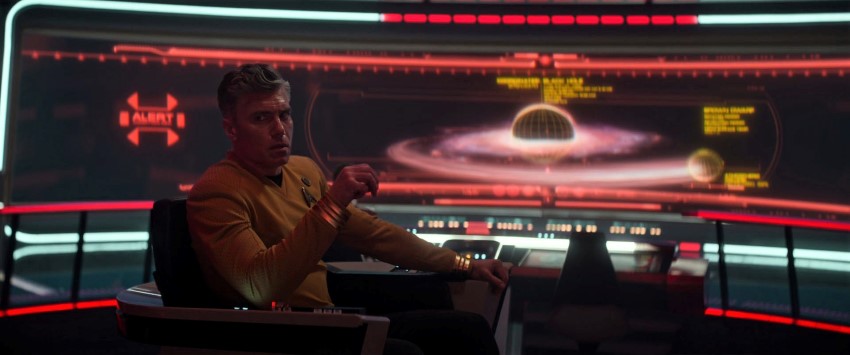
Any other helpful plugins or software that was useful for creating the sounds for Strange New Worlds? Can you share some examples of how you used it?
MS: Sound Particles is a HUGE help on Star Trek. Any time there’s a huge space battle (they happen a lot!) it’s indispensable to be able to take the sounds we’ve made and build all that activity into the scene. It’s a massive, massive time-saver versus trying to cut hundreds and thousands of ships and lasers and explosions.
[tweet_box]Voyage into the Sound of ‘Star Trek: Strange New Worlds’ — with Matthew Taylor, Michael Schapiro, and Kip Smedley[/tweet_box]
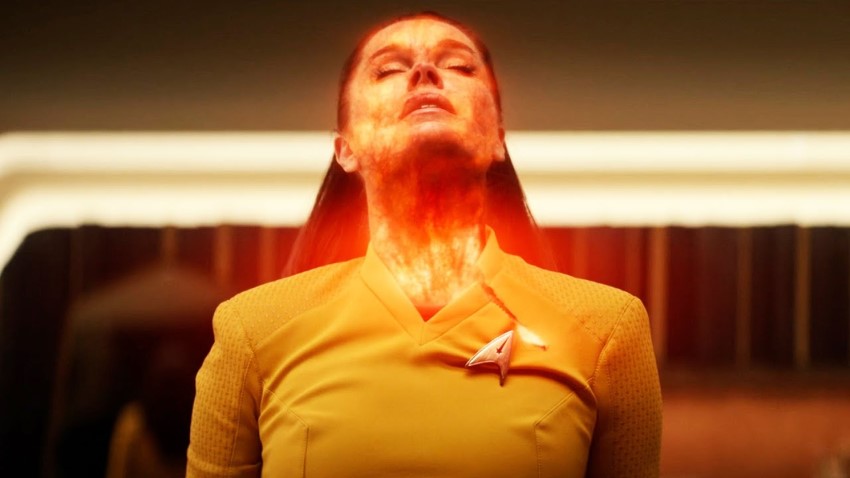
In that same episode, back on the ship, many crew members have contracted a light virus. This offered so many fun opportunities to play with the sound of light – from maxed-out lamps to a sun simulation to Hemmer trying to bring a ball of magma onto the ship. Can you talk about some of the ‘light’ sounds you made and how you made them?
MS: For me, I was keying in on the words “infected” and “light.” In our daily lives, a lot of the visceral sound that we think of for lighting is that 60 Hz hum; that’s what all of our electronics run on. So being able to get that feeling across to the viewer without necessarily using a straight-up 60 Hz hum is always a struggle. I honestly can’t remember if I did anything with a 60 Hz sine wave in there…
KS: I actually checked this session before this interview and you do have some nice 60 Hz chunkiness going on in the light sounds.
I wanted slightly painful noises to make the lights seem brighter than they were.
I was more focused on the super-high piercing 14 kHz – 15 kHz tones to hurt the viewer a bit. I wanted slightly painful noises to make the lights seem brighter than they were. So I used really high frequencies that were a bit painful and bombarded people with them.
MS: And just knowing myself, there are probably some granular elements in there to get across the idea of a virus or infection.
KS: We progressed the sounds to get more violent as they go on. I think the final ones end up with lava bubbling and flesh ripping to really show how violent this can get.
MT: And we had to sell that the light was transmitting something, this virus.
MS: There were a couple of shots that were in the POV of the light. For instance, when Ortegas comes across a crew member who rams his head through the glass covering of a light in the corridor in order to get closer to it. We see his face from the perspective of the light. That’s where the creaturey/skittery virus sound plays up a bit, to show that there’s something ominous about the light. It needed to get your hackles up a bit.
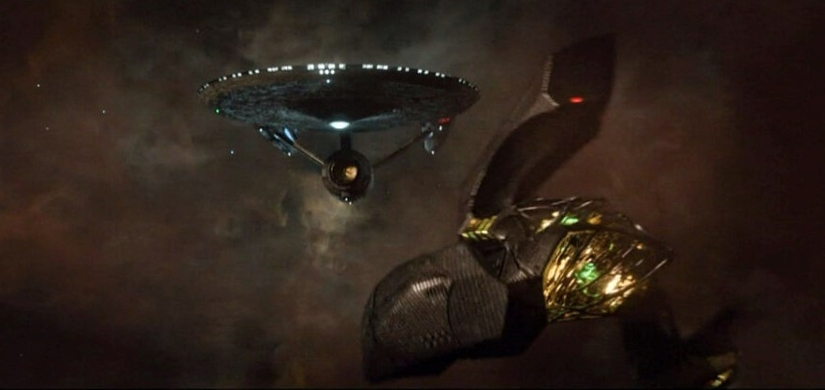
Ep. 4 is action-packed with a massive space battle against the Gorn. I love the sound of the Gorn ships. What went into creating those?
MT: The Gorn ships use race cars as a baseline. Those sounds are heavily processed using Snap Heap. Plugin-wise, the key sound is the Kilohearts Frequency Shifter. Frequency Shifters do a weird thing. If you’ve got them at a very small offset, like 2 Hz, and you mix that into the original signal at 50%, then the sound it produces isn’t quite a tremolo but more of a Shepard’s Tone filter. I’m not sure how to describe it that well, but it’s this strange, alien-sounding “wom-wom-wom” sound.
So that’s the core of the Gorn’s sounds, to get it really alien and unlike anything we’ve heard before. Building on race cars gives us that violent movement to the ships.
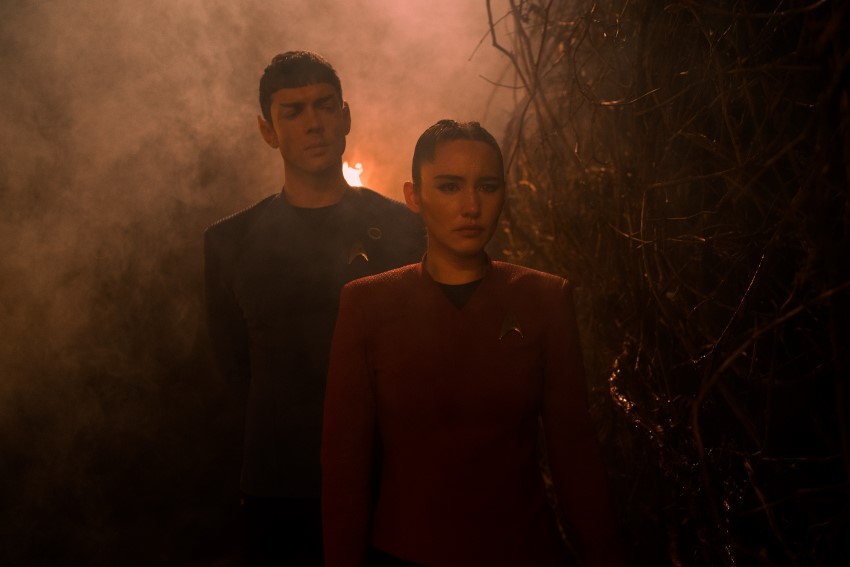
The crew discovers that the Gorn communicate with light pulses, like morse code with light flashes. Again, here’s another challenge to make light sounds. How did you make the sounds for that?
MS: That was entirely synthetic. The goal was to create a feeling that this was a language – that they were communicating.
I used the MeldaProduction MOscillator at a couple of different pitches, wobbling around and cut up, and volume-automated to give it an almost formant style shape.
I used the MeldaProduction MOscillator at a couple of different pitches, wobbling around and cut up, and volume-automated to give it an almost formant style shape.
There are formant filters and the Gorn frequency shifter trick to tie it all together; it’s all built on that. It took a few days of experimentation to get something that I was happy with. I wanted to keep it language-y, using processes that we’d normally use on voices. It was like creating a vocoder from nothing.
I have to thank Matt for fighting for that sound on the stage.
The reason I went almost vocal with the sound was to get across that these light pulses are a communication system. It’s not weaponry.
MT: I’m glad you noticed that sound because there was a point in the discussion on the stage about whether we needed that sound or not.
At the end of the day, the answer was yes.
MS: The reason I went almost vocal with the sound was to get across that these light pulses are a communication system. It’s not weaponry.
KS: Michael did all the light sounds but I found a morse code generator online and typed in “Humans have boarded. It’s a trap.” So La’an is actually typing in morse code. Mike took the morse code beeps I generated and added more futz them to make it sound like the light sounds he had created. But, it’s actually morse code for “Humans have boarded. It’s a trap.”
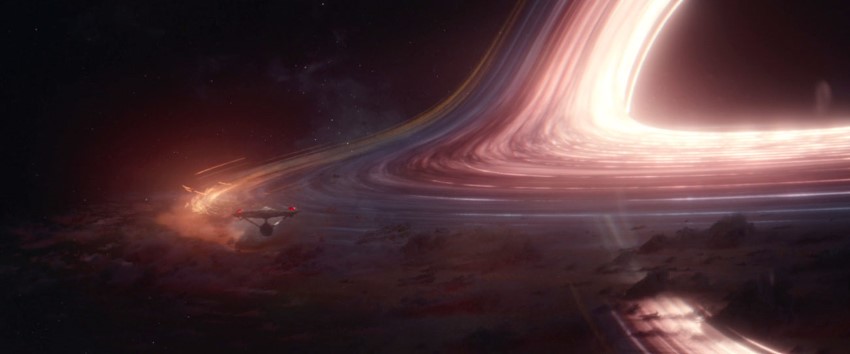
What went into the sounds of the ship impacts during this space battle? How were you able to sell the immediate emergency of these impacts, for both the exterior and interior perspectives, without it feeling like the Enterprise is going to fall apart?
MS: All these Star Trek shows are really hard on their spaceships. They like to crush them, bruise them, throw them through rocks, crash them… They do a lot of damage to them so we had loads of material from previous shows and seasons that we could draw from, which was a huge help.
In the spotting session, Henry definitely called out that they want to differentiate between sinking into the gas giant and being pulled apart by the black hole. It’s brought up in the plot and in the dialogue multiple times that they’re being slowly crushed by the gravitational forces, so we wanted to also get a sense of contrast between the pressure effects and the space battle impacts from the Gorn attack.
…we wanted to also get a sense of contrast between the pressure effects and the space battle impacts from the Gorn attack.
For the gas giant gravity crushing the ship, it’s all metal stress creaking and bending – often slowed way, way, way down to get it to sound like a giant ship.
For the ship getting shot at, it’s all much more impact-based, with big metal hits and slams.
And then again, when they’re heading towards the black hole and they’re being pulled apart, that had more snapping, creaking, pulling, and tearing kind of sounds.
Right around the same time, schedule-wise, we were also doing an episode of Discovery where the ship is getting eaten and dissolved. So there was a lot of metal that we’ve gone through on these shows.
MT: The showrunners understood when to make room for sound effects in this episode, to help them tell their story. There was a sequence when the crew realizes that they were screwed because there’s a shot across multiple locations where multiple crew members hear this horrible ship groan. The showrunners knew that this was the time to back out of music and other sound elements in the build, to focus on that one sound to help tell the story. That goes a long way.
The showrunners knew that this was the time to back out of music and other sound elements in the build, to focus on that one sound to help tell the story. That goes a long way.
MS: I think Uhura has a line that says, “I’ve never heard a ship make that sound before.”
MT: One element in that sound is a super slowed-down rooster.
MS: This was a fun episode for sound. This was the “submarine” episode and we’re trying to get that feeling of claustrophobia. The shots weren’t from outside the ship that often; the sounds were interior, like what the crew was experiencing from their perspective. I loved the sonar pings that add that urgency of something being nearby and they can’t see it yet they can hear it getting closer.
MT: I think it helped too when they were in their go-dark mode as they’re being stalked and stalking; we were told to go lighter with some of the ship beeps, the UI, and the interactions in the mix because it helps elevate the tension. There’s power in some of that silence. It’s not silence, but there’s power in having less sound because when the large moments come, they hit.
MS: There’s the juxtaposition between the ship when it’s running at normal speed and there are all these systems going. We’ve got backgrounds, and bridge beeps. And when we start turning those off, especially when we’re in Ep. 4 and these sounds have been well established, that really keys the viewer into knowing that things aren’t right.
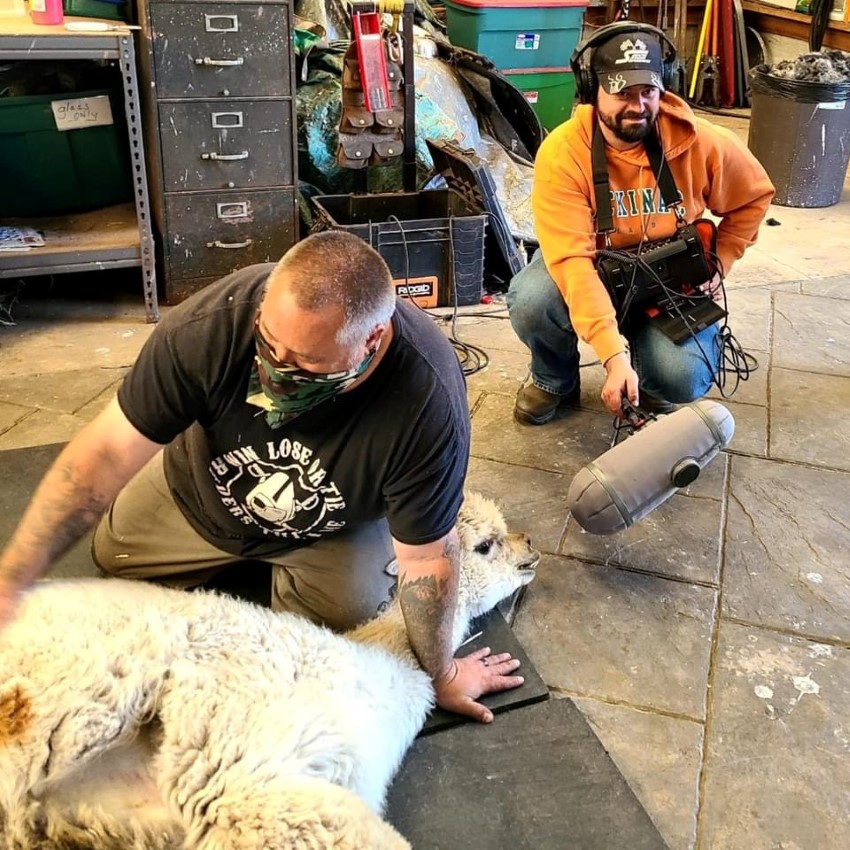
What was your favorite single sound to create? What went into it?
KS: I have five alpacas, some of which make their sonic debuts in Strange New Worlds. One alpaca is extremely dramatic when it comes to shearing season and she is very vocal in letting me know that she does not want to be sheared. And, of course, I recorded that. She sounds like she’s being murdered. It’s the most blood-curdling, terrifying sound.
The sound of a dramatic alpaca being sheared
So, there’s a scene where a creature dies and it needed to make a blood-curdling noise. Jillian the alpaca was perfect for that; she’s just doing her thing.
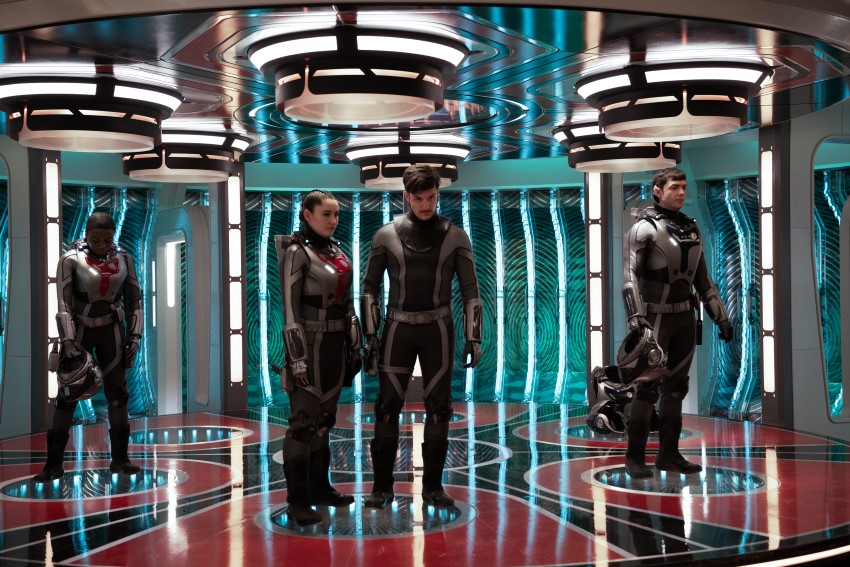
How has working on Strange New Worlds helped you to grow as a sound designer or helped to sharpen your sound editing skills?
KS: Working on this show is not like anything I’ve ever worked on before. There are very few people on the planet that realize how many sounds go into one of these shows, like just the beeps. We talk about the beeps all the time because everything on this show beeps; everything makes a noise and you have to have a noise whether or not that noise gets played or not.
We talk about the beeps all the time because everything on this show beeps…
When they’re on the stage, they have to have a sound for everything. Like, if La’an is typing over here on the side, then we need to hear her a little bit because there’s a gap. So you have to make sure that anytime anybody is at a station, if their hands are on a keyboard, they’re typing. And if they’re typing, it’s making a noise.
MS: And that noise relates to the plot. The beeps are purposeful.
KS: You have to listen to the script. Spock might say that his scans are complete and it came back that there is a ship off to the starboard side. You have to build in sounds before that, to indicate he’s been at his console running a scan.
…there are so many sounds that have to get put in and you don’t have months and months to work on an episode.
Things like that are happening in every scene, all the time, everywhere. So, there are so many sounds that have to get put in and you don’t have months and months to work on an episode. It’s a mad dash. How quickly can you cut something that’s convincing, sounds cool, and does what it needs to do story-wise?
I can’t even explain how that experience changes you as an editor, having to work on a show like this. I was naive going into this, thinking that I loved spaceships and that I can make explosions. It’s so much more than that!
MT: I called him four times before we started and warned him.
MS: For me, it’s speed. I’ve gotten a lot faster after working many years on these Star Trek shows. And paired with that is the confidence of knowing you can be fast and know what will work and what won’t work very quickly. It helps with the speed to be able to know that something is going to work versus thinking that this might work.
And paired with that is the confidence of knowing you can be fast and know what will work and what won’t work very quickly.
KS: It’s nice for Michael and me to work the way we do. We work as a backstop for each other. We catch things for each other. We can bounce ideas off of each other.
MS: It’s great to have a team and not be hoping and praying all on my own.
I mentioned before how archeological the work is. I think I use iZotope RX more as a reverse engineering tool than a cleaning tool these days. I’m able to take some of these old sound effects and look at their spectral arrangement and really pick that apart, to use that as a baseline or a starting point to generate new material that fits into the same realm.
I’m able to take some of these old sound effects and look at their spectral arrangement and really pick that apart…
That’s been a huge help and a skillset that I never would’ve expected to build or think about – reverse engineering what they were doing and thinking about processes and equipment they’d have 50 or 60 years ago to make this stuff, and thinking about what I can use to emulate that.
MT: First, I want to say that having Mike and Kip was freaking great. They just ran with it and did their thing. They’re awesome. I knew things were handled. There was a lot going on in the Trek verse so having them on board, just doing their things, and working with them as a team was really rewarding. They made me a better sound designer/editor/supervisor right off the bat.
…when it all comes together on the stage, you have to make choices.
Personally though, for me as a supervisor, this show improves my ability to make story-related choices on the mix stage. There’s just so much going on, and when it all comes together on the stage, you have to make choices. And I feel like working on these shows helps me to hone that skill. Sometimes that requires me to cut some stuff on the stage, or reach out to Mike and Kip. I’m always learning.
MS: I second that entirely.

There is A TON of sound on this show, but it’s important for the storytelling. I think you’ve done an incredible job of wrangling all the elements to best serve the story….
MT: Thanks. And that starts, again, with Kip and Mike and everyone else who works on the show, like our mixers Todd Grace and Ed Carr. It’s a team effort from the start. This show relies heavily on sounds but it also honors what’s come before it. I’m confident in saying we honor that, but we also take it forward. And I’m really happy with this show.
MS: Shout out to Henry too, for allowing us to do that and thinking about sound from the beginning. Sound is never an afterthought on these shows. It’s nice to have all that support.
KS: And the team is larger than just the three of us here. We have David Barbee, who cut our backgrounds. And Clayton Weber, our foley editor. Alex Pugh jumped in to help with the ship metal in a few episodes, and the sparks.
MT: And I also want to recognize our foley crew, John Sanacore, Rick Owens, Alex Ullrich and, of course, Harry Cohen who helped with sound design.
A big thanks to Matthew Taylor, Michael Schapiro, and Kip Smedley for giving us a behind-the-scenes look at the sound of Star Trek: Strange New Worlds and to Jennifer Walden for the interview!

